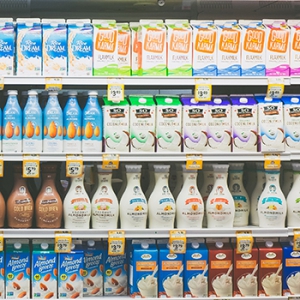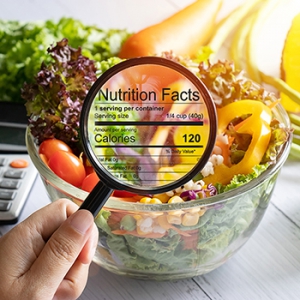Have you ever heard or seen these words before? Perhaps on your favorite products in the store, in advertisements, or on menu boards? If so, it might be a health halo:
- “Organic”
- “Natural”
- “Sugar-Free”
- “Free Range”
- “Grass-Fed”
- “Made with REAL Fruit”
- “Locally Grown”
- “Fresh”
- “No antibiotics”
- “Hand Cut”
 How it works
How it works
Walking through your local grocery store, you’ll come across so many products that you may not realize have special buzzwords designed specifically to attract you to them. They give you this idea, deep in your subconscious, that what you are buying is healthy. This is sometimes referred to as a “health halo.” These buzzwords let you know there is no need to look any further. They do their best to keep you from looking at that ACTUAL nutritional label on the back. Over the last few years, I’ve learned that there is a massive difference in what people perceive as healthy and what is truly healthy.
Think of the typical fast food chicken sandwich as an example. The company selling them might say they are “Free Range, Organic, No Antibiotics, Hand Cut” chicken fillets. This doesn’t mean that when you fry them in oil, slather them with barbeque sauce and mayo, and top ‘em with a big white bun that they are still healthy eating. But that’s what good marketing does. It gives this fried food a “health halo.”
 Defining the health halo effect
Defining the health halo effect
So, the “health halo” effect can be summed up like this: one’s tendency to overestimate the healthfulness of something because of a single claim or attribute. Think of when a food says it’s “low calorie” or “low fat.” These two factors are often confused, and result in someone eating too much of that food and taking on way more calories than they thought they would. Many people believe that these terms mean the foods are more nutritious and healthier for you than others. An example of this might be the term “natural,” generally meaning the product was processed at a minimum. So what? Minimally processed sugar… is still sugar. “Hand Cut” fries are another example. Yes, they may be hand cut from fresh potatoes and not pre-formed and frozen, but are they still deep-fried in vegetable oil?
In other words, the health halo, when it succeeds in its mission, gives us permission to eat more than we would have otherwise. We feel less guilty if the product was promoted as “low calorie,” “grass-fed,” or “locally grown.”
Seeing the health halo effect in action
If you take the time to wander around your local grocery store you’ll find plenty more. Simply go down the beverage aisle! I’m confident you will find many super high calorie, sugar-filled drinks that are flavored with all kinds of “natural” ingredients: vitamins, minerals, vibrant colors (and even, of course, the sugar itself) that make many promises for your health and well-being. All of this is packaged with edgy taglines and fancy imagery… not to mention a higher price. Personally, I’ll settle for water.

Avoiding the health halo effect
How do you make healthy choices and avoid falling into the health halo trap? Truth is, we’re all vulnerable. We want — well, at least I know I do — to eat delicious, unhealthy food. (At least, on occasion.) We can be easily tricked into believing those “organic” and “locally grown” ingredients make the huge cheesy pizza we’re about to eat seem less bad for us… especially in a moment of craving, or when the smell wafts over to us.
- My number one recommendation: don’t let your guard down when you see terms that “sound healthy” and focus on the facts in the nutrition label. Just because the food says it’s low in fat or sugar does not automatically make it healthier than other choices. Once you look a little deeper and check the actual nutritional information, you may find a different reality there.
- My number two recommendation: Pay attention to serving sizes. Perhaps the food is “only 100 calories per serving!” but a serving is pathetically small. I think we’ve all seen this before, too — how often do we only have one-third of our bottled beverage just because that’s a proper serving?
As you move forward with your investment in personal health, make sure to avoid these kinds of tricks — your future well-being depends on it!
December 2019
